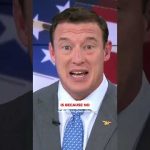The latest spectacle in our skies has predictably sent the mainstream media into another round of fevered speculation, with cable pundits and click-hungry hosts trading breathless headlines about “aliens” before the facts are in. On conservative airwaves, UFO researcher Daniel Alan Jones joined Will Cain to dismantle that sensationalism and remind viewers to separate genuine science from hysteria. Americans deserve sober assessment, not late-night panic theater masquerading as reporting.
What astronomers actually found was an irregular, hyperbolic interstellar visitor catalogued as 3I/ATLAS — discovered by the ATLAS survey on July 1, 2025 — not a Hollywood spaceship. Early observations show it follows a trajectory that marks it as the third confirmed interstellar object to pass through our solar system, joining the ranks of ʻOumuamua and Borisov.
Telescope teams around the world quickly weighed in: some instruments detected a faint coma and subtle activity consistent with a comet, while others initially reported a lack of classic cometary features — the kind of healthy scientific back-and-forth that yields real knowledge, not headlines. Crucially, astronomers have been clear that this visitor poses no threat to Earth as it skirts well beyond our planet’s orbit and reached perihelion on October 29, 2025; it even passed near Mars earlier in October.
That rational, measured response should shame the armchair prophets and cable alarmists who leap from mystery to conspiracy in thirty seconds flat. Too often, the left-leaning media weaponizes curiosity into clickbait, spinning every unexplained blip into a narrative that feeds instability and distracts from real issues — inflation, crime, and the open-border chaos that threaten our communities. Conservatives must call out that malpractice and insist on evidence before hysteria.
At the same time, real credit belongs to the men and women in observatories and on amateur astronomy forums who do the painstaking work of tracking, measuring, and debating these objects. Their discipline proves the best defense against fearmongering: careful observation, peer review, and public transparency. If anything, this episode should push Congress to fund more ground-based surveys and defend science from politicized attacks, not gut it.
There’s also a national-security angle that deserves a straight conservative take: be skeptical of secrecy used to dodge accountability, but don’t surrender common sense to paranoia. The Department of Defense and NASA should release what they can about detections and leave the speculation to scientists and informed commentators; meanwhile, taxpayers should not be sold on panic budgets or theatrical spending sprees driven by cable TV ratings.
In the end, this is an opportunity to remind hardworking Americans that curiosity and caution go hand in hand. We can marvel at the cosmos while demanding rigorous, transparent science and condemning sloppy media theatrics. Keep your head, trust the experts who do the work, and don’t let the fever of sensationalism distract from the real fight to preserve American strength and common-sense governance.




